Forsyth Fleet: futurism on the ship
Moscow taxi drivers do not immediately believe that my destination, River Station is not the metro, but the real Northern River Station of the capital, with river maps and flight attendants. We drive right into its territory and drive to the fourteenth pier, from which the Forsyth Fleet, a joint project of the Agency for Strategic Initiatives and the RVC venture company, is sent on a five-day cruise along the canals and rivers to the Volga and back.

The Agency for Strategic Initiatives (ASI) was created by the Russian government even when Putin was prime minister: in 2011. The simplest words to describe his goal are to contribute in every way to the progress in the Russian Federation, finding ways to improve the entrepreneurial climate, develop modern technologies and grow innovative markets.
Forsyth Fleet is one of the products of ASI brain activity.
')
"Forsyth Fleet" - an annual, already the fourth event in a row. The result of four and a half days of hard work should be a set of “road maps” - predictions of changes for the next 20 years in different areas and proposals for specific measures (bills, decrees, etc.) that will help translate the image of the desired future into reality.
Areas formed from “markets”:
The Forsyth Fleet ended more than a week ago, but the work to which it was dedicated is in full swing: now its mental results are being processed, formalized. In the end, they should be transformed into concrete proposals and decrees that will lay down on Putin’s table.
This is the idea on which the whole concept of the Agency is built: the chairman of the ASI supervisory board is Vladimir Putin himself, i.e. Agency offers come directly to him. And from then on it will depend on which of them will get a move through presidential decrees. The circle is closed: thus, the ASI is something of Putin’s brain trust, and Forsyth Fleet is one of the formats for generating ideas. At the same time, the Agency itself is not engaged in the distribution of money and powers, which should exclude the corruption component in its work. A "Forsyth Fleet" - by and large, a meeting of idealists, albeit often with large positions, including in public service.
The Forsyth Fleet organization is the result of the joint work of the Young Professionals Directorate of ASI, which is headed by Dmitry Peskov (another Dmitry Peskov, not Putin’s press secretary) and the Russian Venture Company (RVC), from which the Fleet is supervised by the Deputy General Director of RVC Evgeny Kuznetsov .
The fleet hierarchy was organized as follows: three program directors, one for each boat: Evgeny Kuznetsov at Alexander Radishchev, Vladimir Kniaginin, president of the Center for Strategic Research foundation, at Zosima Shashkov, and Pavel Luksha, professor of practice at the Moscow School of Management SKOLKOVO, on Lev Tolstoy.
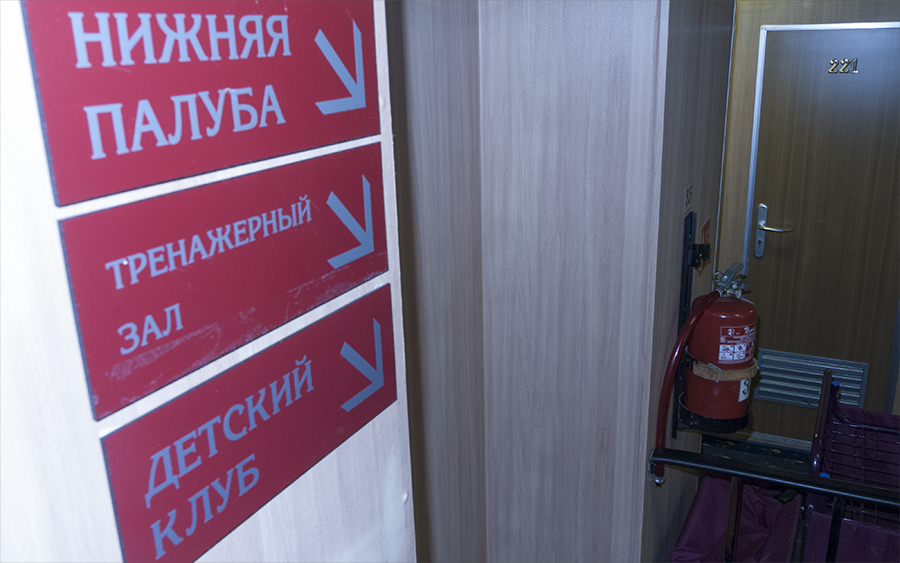
A separate working group was responsible for each of the identified areas / markets. Each participant of the FF was assigned to one group or another, which was recruited from February 20 and included a rigorous selection: the competition averaged 3 people per seat.
The leaders of the groups were selected and invited in advance by the organizers - these are major professionals in each of the areas, often not working in Russia for a long time and who came to take part at the personal invitation of the ASI leadership and the RVC.
For example, the leader of Avtonet was Irek Gumerov, deputy general director of Kamaz, Foodnet was led by Sergey Vykhodtsev, founder of Invite, Bystrov, VELLE; “Finnetom” —Mikael Gorsky, CEO of the Olympus Business Publishing House. And Sergey Khmelevsky, Chairman of the Board of the Institute of Regional Innovation Systems, was in charge of “Safenet”.
For the coordinated work of each group, the moderators working in them were responsible. In March-April, the ASI conducted a foresight school for NTI moderators: 80 students were selected from the received applications and trained in intensive mode 4 times a week. As a result, 40 people received certificates of moderators and assemblers, who continued to work on the Foresight Fleet. Also moderators were representatives of the company " Constructors of Practices Community "
The fleet departed from the River Station of Moscow on May 12. The program was divided into three courts: Alexander Radishchev, Leo Tolstoy and Zosima Shashkov. On Leo Tolstoy, AeroNet, MariNet and AutoNet (140 people) are united. Zosima Shashkov gathered EnergyNet, Foodnet and SafeNet (212 people). And NeuroNet, HealthNet and FinNet (the largest number of participants - 245 people) went to Alexander Radishchev. We will go through this journey with them.

Metal detectors are now everywhere - when landing on a motor ship, they check how at the airport

Metal door next to the usual office - functional solutions from different eras
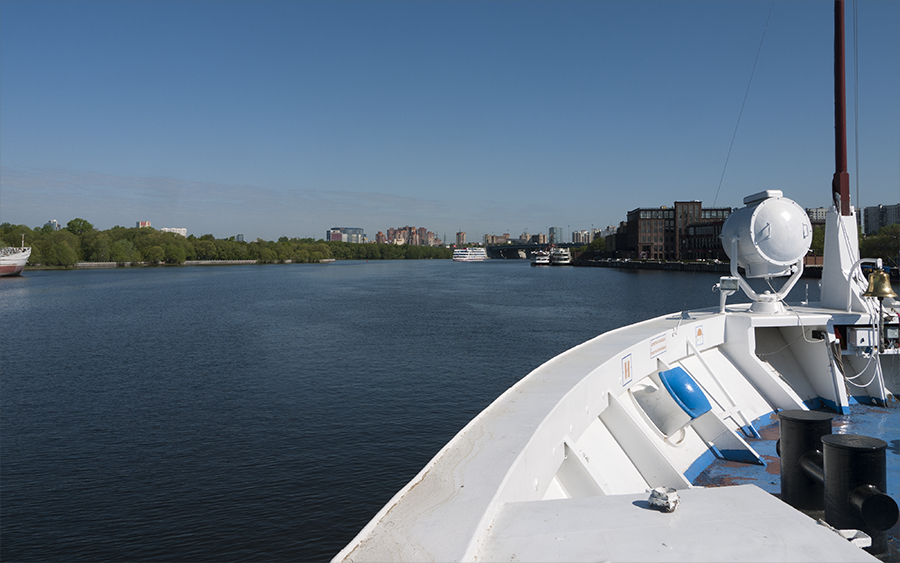
Looking forward
Work on the ships began almost immediately. Already at 9 am, as soon as the ships left the pier, an organizational meeting was held on the upper (sun) deck of “Alexander Radishchev”, which was held by Yevgeny Kuznetsov. There were many people:

Lots of:

The same thing happened on the rest of the mini-flotilla ships.


The four-deck motor ship “Alexander Radishchev” was built in 1982 in Germany. Its speed is up to 26 km / h, its dimensions are 125 m in length, 16.7 m in width, and draft of 2.7 m. It can accommodate 272 passengers on board.
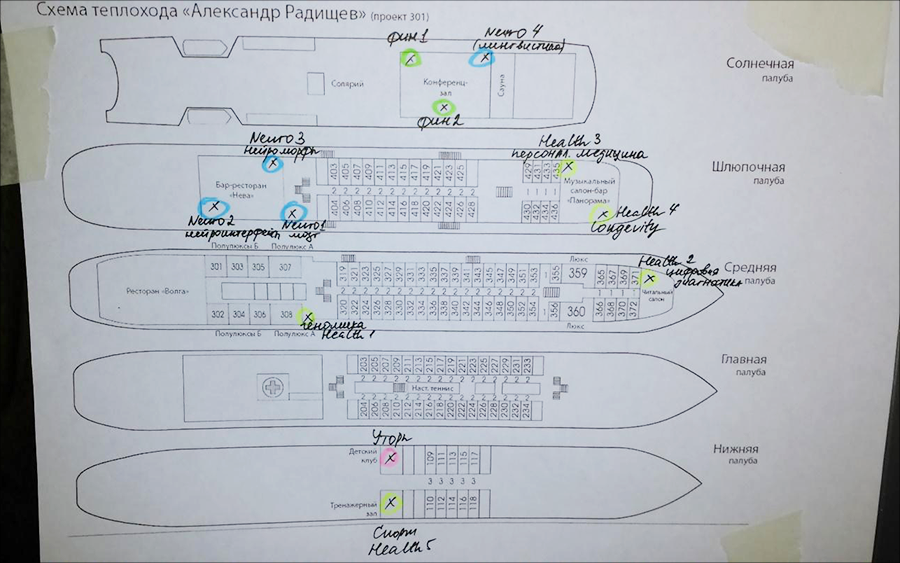
This is a completely autonomous vehicle: everything you need, including drinking and tap water, is refueled on the shore. All waste is also dumped there, so the ship does not pollute the river.

The captain's cabin is a mixture of technology from the 80s and modern navigation equipment.

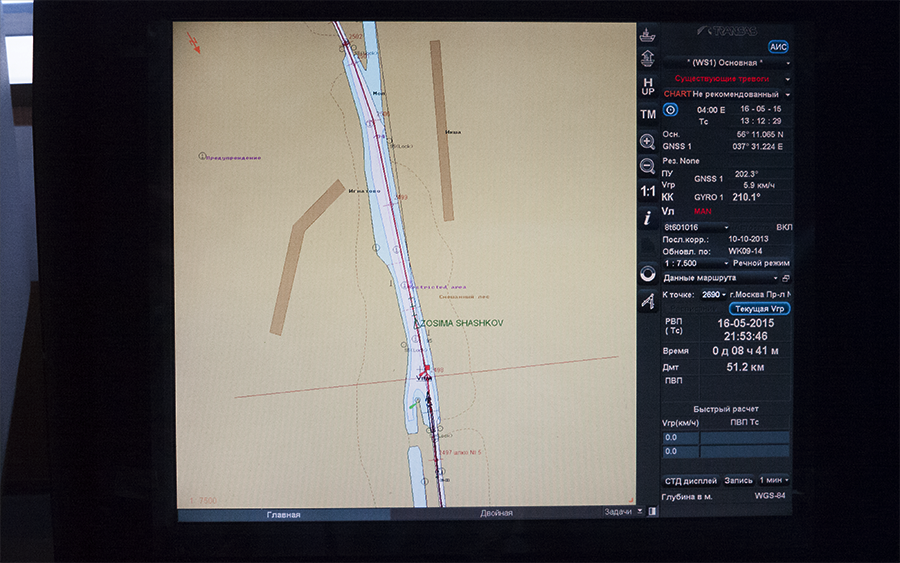
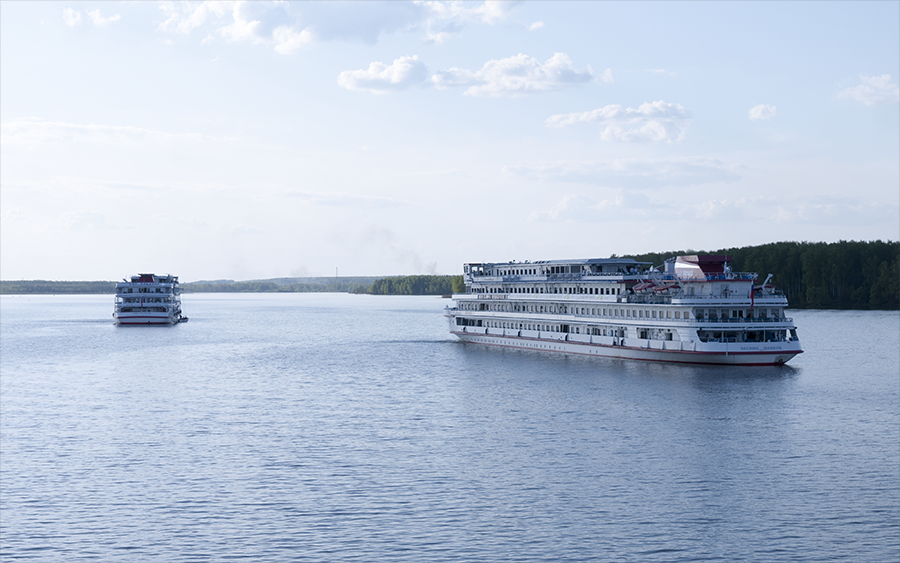

Most of the voyage working groups on different ships were divided by the river. The opportunity to get together was presented only on the coast, during two scheduled stops - in Kostroma and Myshkin - and during such small docks, when the ships literally stood aboard, allowing passengers to communicate with each other and catch Wi-Fi from their neighbors.


Under the working space every suitable angle of the ship was re-equipped, including the decks:

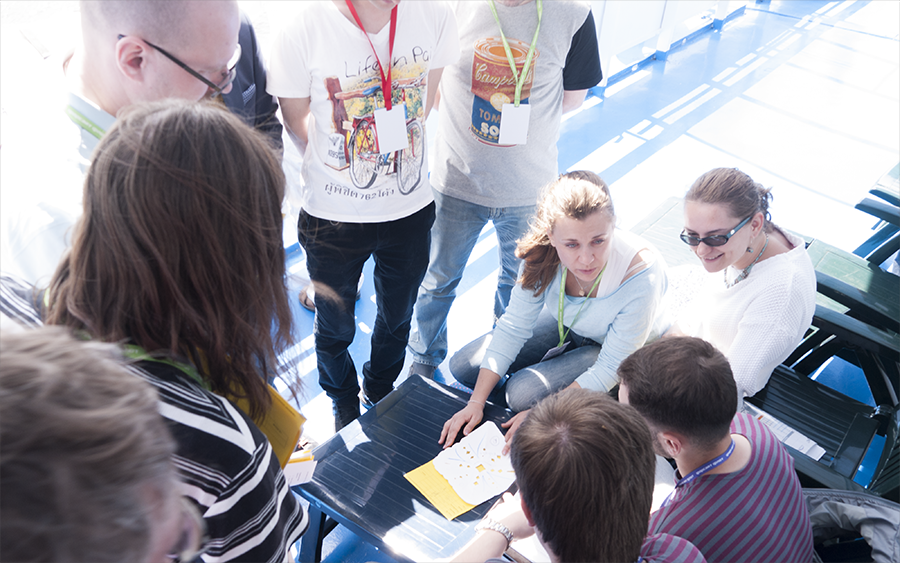
Restaurants:
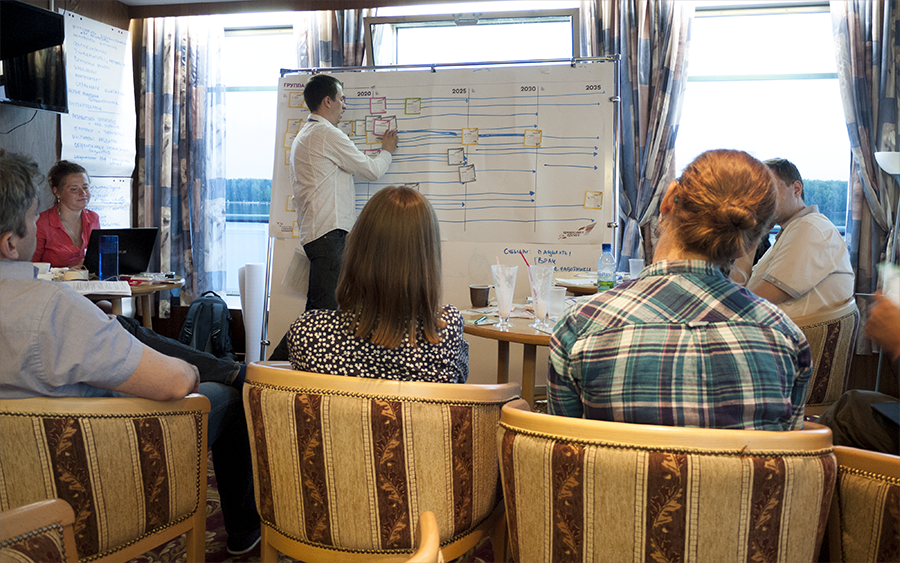

And the corridors:
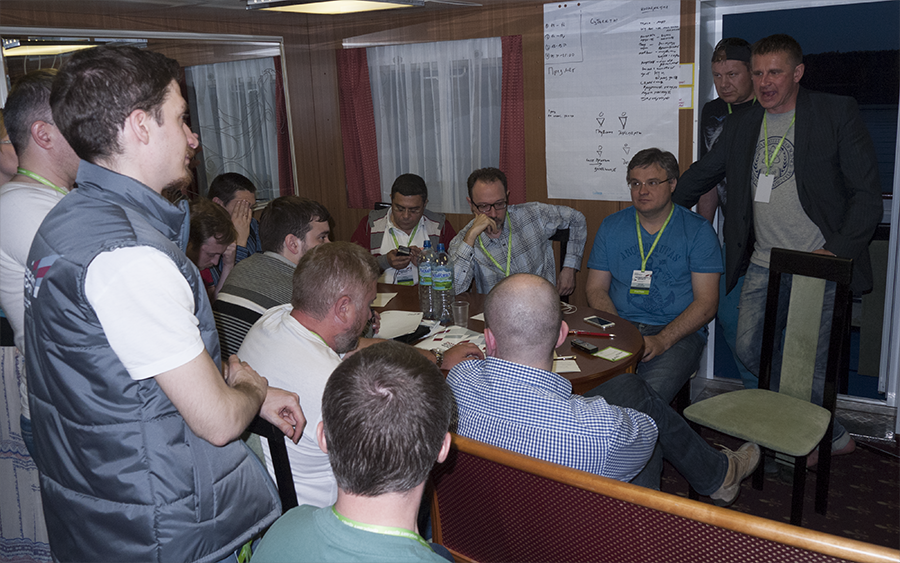
Sun deck, sunny day, ottomans. How can you work in such conditions?
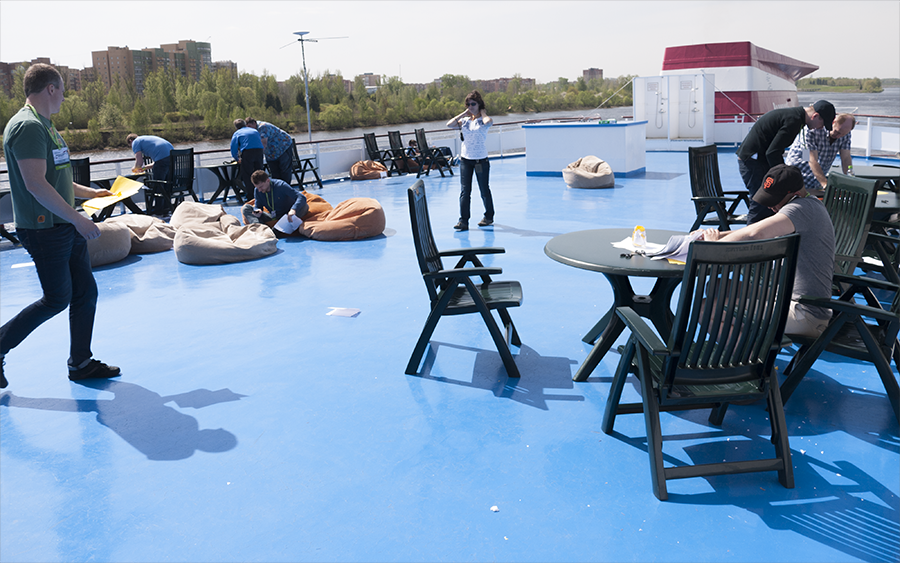
The day on the ships began at 8 am from breakfast and ended at 9 pm with dinner. The rest of the time, except for food, was devoted to work. As I already said, mostly idealists gathered at the "Foresight". And, as it turned out, enthusiasts. I think the readers of our site do not need to tell how infectious can be joint mental work. Therefore, even in the breaks, at the dining tables in the ship’s restaurant and after the end of the day, at 22 o'clock discussions of thematic issues of different groups sounded everywhere.
Some of them continued to gather even during the rest. When I was once agitated by another idea, the Forsythans called the non-working members of their group to the desktop by midnight.
A two-hour parking lot in Myshkin with a guided tour for all who wanted it also seemed to someone to be an unnecessary waste of valuable working time, so that passengers gently agitated not to waste time on tourism:

However, this labor is extreme, as a collective farm from a saying: the case is voluntary. Most of the participants still devoted an evening of rest and recuperation for the next day. Yes, and the opportunity to take a walk on hard ground during parking, few refused.

An evening of whiskey and cards - quite a sea pastime
The device of the Rapid Forsyth technology, in which the entire thinking process of the Foresight Fleet itself was organized, deserves a separate story, if not a separate article on Megamind .

However, the essence of the technology is very simple and is shown directly in the photo: it is a board, marked up in a cell by year and various aspects of the chosen area or market.

Moderators have several types of stickers - Technologies, Opportunities, Regulations, Formats, etc., on which participants' thoughts, suggestions and assumptions are written and then placed on this board in the respective zones.
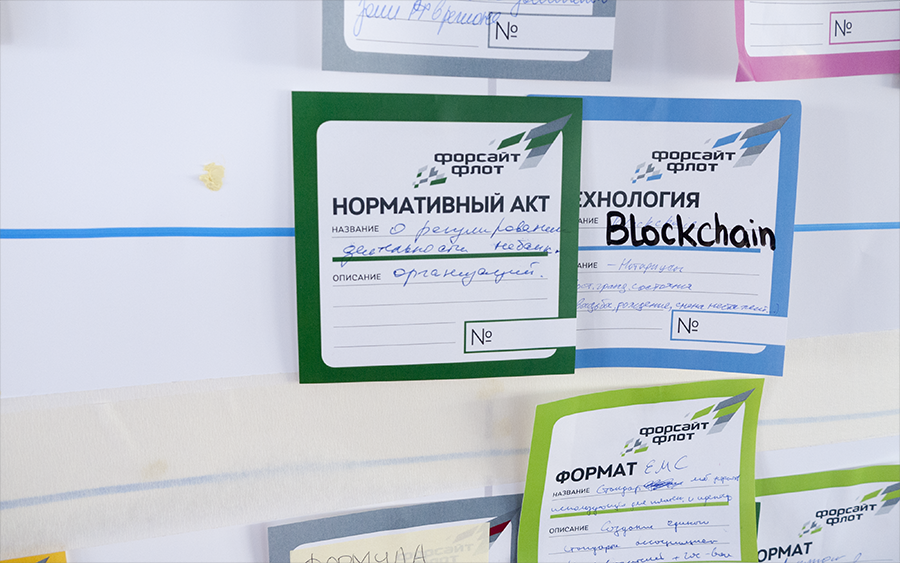

Thus, within a few hours of brainstorming, a map of the future is born, formed by a collective presentation of the working group members.
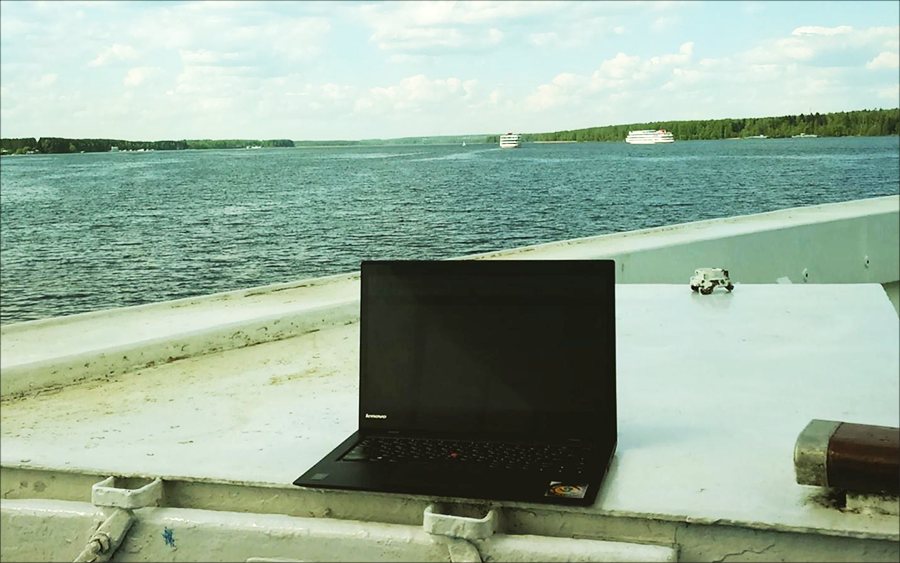
The advantages of this format are obvious: in a relatively short period of time, it is possible to formulate future views, including challenges, threats and opportunities - a great thing for strategic planning.
The drawbacks are also visible immediately: firstly, it is obvious that the quality of the result of the work of such a group strongly depends on moderation and leaders, formal and informal — that is, human factor. Secondly, in any case, the result will be a combination of today's ideas of specific people gathered in one place. As historical experience shows, no one actually could predict the future precisely because many of his turns were unpredictable from the point of view of the experience of those who tried to predict it. However, of all the available forecasting options, the foresight is probably one of the best. Such a brainstorming, looking into the future, with the results applied to the line of dates.
The entire program of the Fleet took 5 days: from early morning on Tuesday until Saturday evening, when Forsyth returned to Moscow. The first two days the weather was sunny and wonderful. Even too sunny: working on deck was almost impossible.
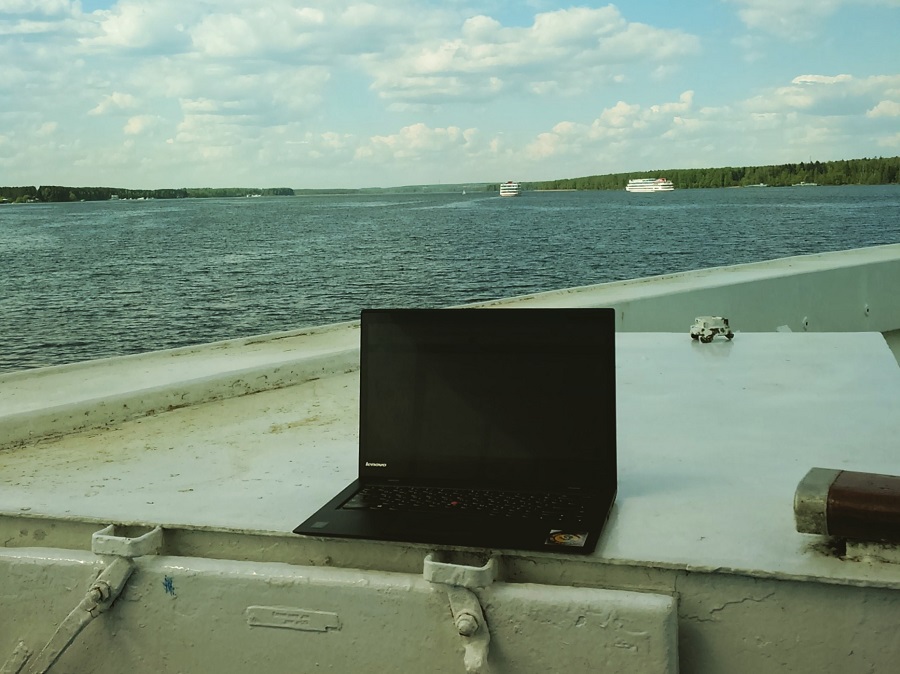
The screen of this laptop is on
One of the most interesting views opens on the Uglich Reservoir: the famous bell tower of the Nikolsky Cathedral in the city of Kalyazin, most of which was flooded during the construction of the reservoir in the 30s of the 20th century, against the background of the Kalyazin Radio Astronomy Observatory :

Immediately three eras in one frame. It could be a photoshop, but this is our story:

Space village practically
Photos taken during the cruise were printed during the first stop in Kostroma and hung along the walls:
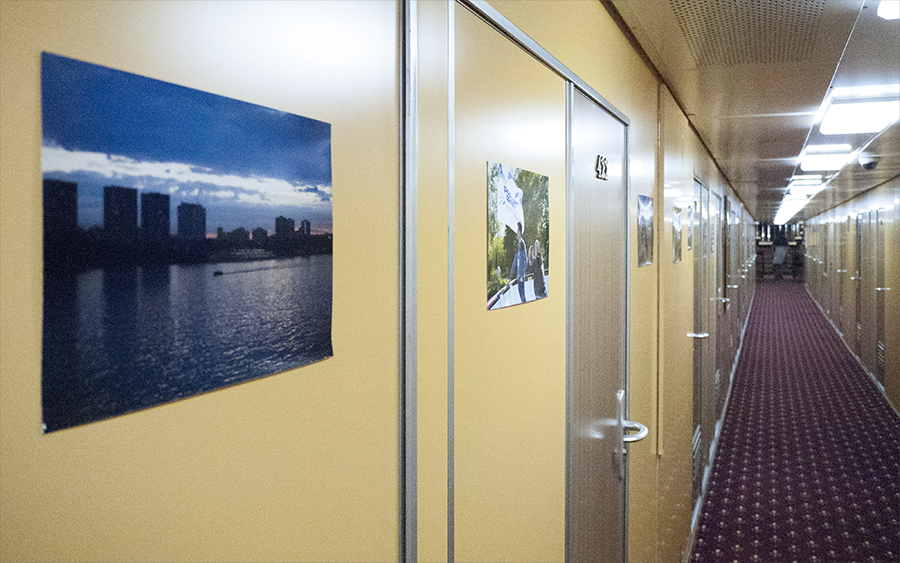
On the third day the weather turned bad, it became cold and it started to rain:


All working groups finally moved inside:

On Saturday, the last day of the Foresight Fleet, the results of the foresight of each of the working groups were presented during one large meeting. Below I will give a transcript of the speeches that have been heard so that you can evaluate the ideas and results of the Fleet on your own.
Vladimir Statut, head of Neuromatiks company:
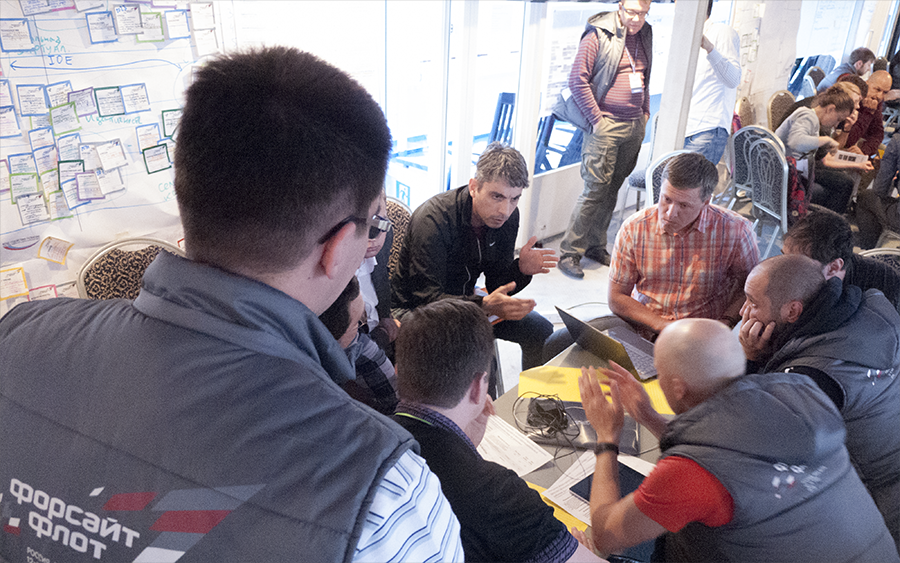
Maxim Patrushev, Director of the Institute of Chemical Biology of the Baltic Federal University, Head of the Neurophysiology subgroup:
Alexander Zhavoronkov, head of SiliconMedicine, which is located at Johns-Hopkins University in the United States, Baltimore, and has a large development base in Russia:
Evgeny Pluzhnik:
Andrey Ivaschenko, NeuroNet market leader:

Alexey Konov, General Director of the RusBio Ventures Foundation:
Vladislav Varyanik:
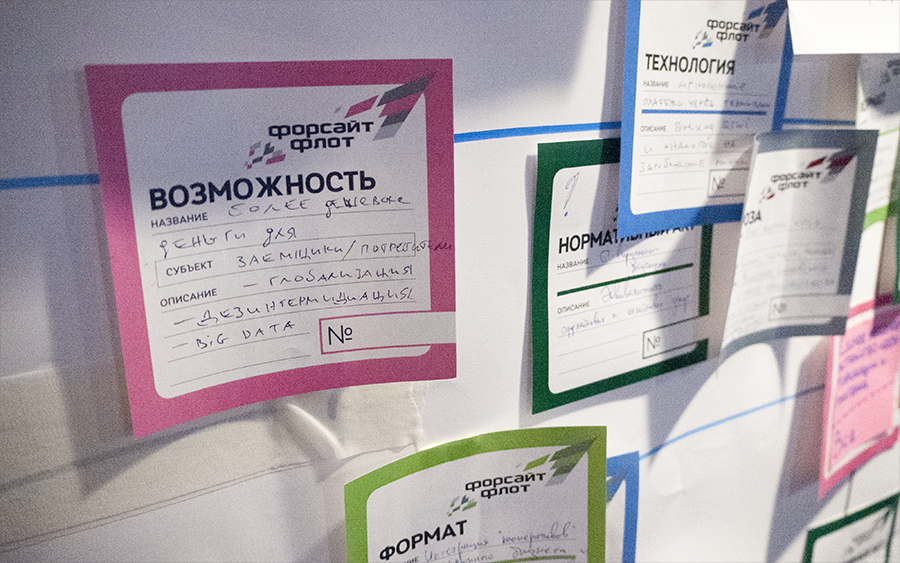
Mikael Gorsky, FinNet:
Marina Gureva, Finnet:
Alexander Lupachev, "FinNet":
Additional commentary by Mikael Gorsky (CEO of the Olympus Business Publishing House, member of the RVC Advisory Council):
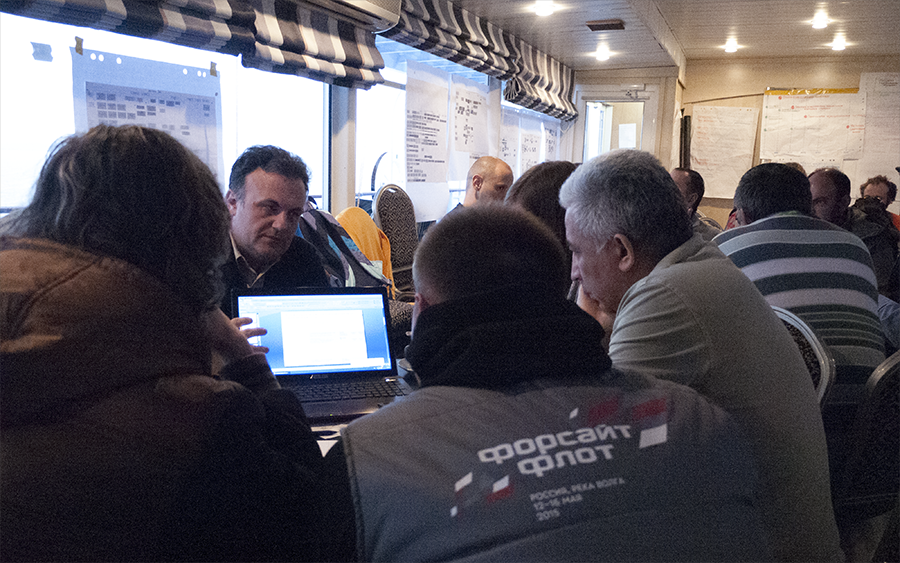
Yevgeny Kuznetsov summed up the work on the "Alexander Radishchev"

On May 16, exactly at 20 o'clock, the “Alexander Radishchev” got up at the same pier of the Northern River Station of Moscow, from which he had sailed five days before.
The Forsyth Fleet is over, but the foresight continues: the working groups will bring the road maps to working condition. A report on the results of their work will be presented to the President in July 2015. If Putin approves the submitted roadmaps, then the work of the RVC project office will unfold in full. Road maps on the degree of readiness will be coordinated with the relevant authorities and launched for implementation.
But whatever the future of these documents, and whether our predictions will come true or not, the future will come anyway. And put everything in its place.

The Agency for Strategic Initiatives (ASI) was created by the Russian government even when Putin was prime minister: in 2011. The simplest words to describe his goal are to contribute in every way to the progress in the Russian Federation, finding ways to improve the entrepreneurial climate, develop modern technologies and grow innovative markets.
Forsyth Fleet is one of the products of ASI brain activity.
Foresight (English “forecast” - foresight) is a technology of long-term forecasting, a way to build a coherent, balanced and responsible image of the future. It is based on the technology of working with large expert panels - hundreds of experts pass on their knowledge, opinions and assumptions. At the same time, response processing technologies ensure the formation of a complete presentation. The results of the work of expert panels: lists of promising technologies, development scenarios, are processed in a series of special discussions with decision makers in the field to which Foresight is dedicated. The outcome of the Foresight is the overall image of the future, which is clear and acceptable to all participants.One type of Forsyth - Rapid Forsyth (RF) , a “quick forecast”, implies the ability to do the same, but in a short time much cheaper. However, it has its limitations: RF implies a very high involvement of participants in the process, i.e. several days of continuous work from dusk to dawn. What determines the purely logistic complexity of the process: how to keep several hundred people, usually very busy and having a lot of distractions (meetings, meetings, etc.) in one place for several days? Meeting rooms in the cities is not an option, even from a country boarding house is easy enough to leave. Between the plane, train and ship, the choice was made in favor of the ship because of the maximum capacity - of all the options, the ship is most suitable as a replacement for offices / hotels. However, the capacity of river ships is still not enough for the number of participants gathered - 597 people, so the Forsyth Fleet - 2015 set off on three river vessels at once.
')
"Forsyth Fleet" - an annual, already the fourth event in a row. The result of four and a half days of hard work should be a set of “road maps” - predictions of changes for the next 20 years in different areas and proposals for specific measures (bills, decrees, etc.) that will help translate the image of the desired future into reality.
Areas formed from “markets”:
- EnergyNet - energy of the future, smart cities
- Foodnet - agriculture, genetics
- SafeNet - personal security systems, privacy protection
- HealthNet - the future medical technology
- AeroNet - mass unmanned aircraft
- MariNet - remotely controlled marine vessels
- AutoNet - unmanned vehicles
- FinNet - Future Finance, Decentralized Currencies and Settlement Operations
- NeuroNet - integration of the brain with electronics, external interfaces for mental activity
The Forsyth Fleet ended more than a week ago, but the work to which it was dedicated is in full swing: now its mental results are being processed, formalized. In the end, they should be transformed into concrete proposals and decrees that will lay down on Putin’s table.
This is the idea on which the whole concept of the Agency is built: the chairman of the ASI supervisory board is Vladimir Putin himself, i.e. Agency offers come directly to him. And from then on it will depend on which of them will get a move through presidential decrees. The circle is closed: thus, the ASI is something of Putin’s brain trust, and Forsyth Fleet is one of the formats for generating ideas. At the same time, the Agency itself is not engaged in the distribution of money and powers, which should exclude the corruption component in its work. A "Forsyth Fleet" - by and large, a meeting of idealists, albeit often with large positions, including in public service.
The Forsyth Fleet organization is the result of the joint work of the Young Professionals Directorate of ASI, which is headed by Dmitry Peskov (another Dmitry Peskov, not Putin’s press secretary) and the Russian Venture Company (RVC), from which the Fleet is supervised by the Deputy General Director of RVC Evgeny Kuznetsov .
Working groups and participants
The fleet hierarchy was organized as follows: three program directors, one for each boat: Evgeny Kuznetsov at Alexander Radishchev, Vladimir Kniaginin, president of the Center for Strategic Research foundation, at Zosima Shashkov, and Pavel Luksha, professor of practice at the Moscow School of Management SKOLKOVO, on Lev Tolstoy.

A separate working group was responsible for each of the identified areas / markets. Each participant of the FF was assigned to one group or another, which was recruited from February 20 and included a rigorous selection: the competition averaged 3 people per seat.
The leaders of the groups were selected and invited in advance by the organizers - these are major professionals in each of the areas, often not working in Russia for a long time and who came to take part at the personal invitation of the ASI leadership and the RVC.
For example, the leader of Avtonet was Irek Gumerov, deputy general director of Kamaz, Foodnet was led by Sergey Vykhodtsev, founder of Invite, Bystrov, VELLE; “Finnetom” —Mikael Gorsky, CEO of the Olympus Business Publishing House. And Sergey Khmelevsky, Chairman of the Board of the Institute of Regional Innovation Systems, was in charge of “Safenet”.
For the coordinated work of each group, the moderators working in them were responsible. In March-April, the ASI conducted a foresight school for NTI moderators: 80 students were selected from the received applications and trained in intensive mode 4 times a week. As a result, 40 people received certificates of moderators and assemblers, who continued to work on the Foresight Fleet. Also moderators were representatives of the company " Constructors of Practices Community "
Chronicle of events
The fleet departed from the River Station of Moscow on May 12. The program was divided into three courts: Alexander Radishchev, Leo Tolstoy and Zosima Shashkov. On Leo Tolstoy, AeroNet, MariNet and AutoNet (140 people) are united. Zosima Shashkov gathered EnergyNet, Foodnet and SafeNet (212 people). And NeuroNet, HealthNet and FinNet (the largest number of participants - 245 people) went to Alexander Radishchev. We will go through this journey with them.

Metal detectors are now everywhere - when landing on a motor ship, they check how at the airport

Metal door next to the usual office - functional solutions from different eras

Looking forward
Work on the ships began almost immediately. Already at 9 am, as soon as the ships left the pier, an organizational meeting was held on the upper (sun) deck of “Alexander Radishchev”, which was held by Yevgeny Kuznetsov. There were many people:

Lots of:

The same thing happened on the rest of the mini-flotilla ships.


About the ship
The four-deck motor ship “Alexander Radishchev” was built in 1982 in Germany. Its speed is up to 26 km / h, its dimensions are 125 m in length, 16.7 m in width, and draft of 2.7 m. It can accommodate 272 passengers on board.

This is a completely autonomous vehicle: everything you need, including drinking and tap water, is refueled on the shore. All waste is also dumped there, so the ship does not pollute the river.

The captain's cabin is a mixture of technology from the 80s and modern navigation equipment.




Most of the voyage working groups on different ships were divided by the river. The opportunity to get together was presented only on the coast, during two scheduled stops - in Kostroma and Myshkin - and during such small docks, when the ships literally stood aboard, allowing passengers to communicate with each other and catch Wi-Fi from their neighbors.


Under the working space every suitable angle of the ship was re-equipped, including the decks:


Restaurants:


And the corridors:

Sun deck, sunny day, ottomans. How can you work in such conditions?

The day on the ships began at 8 am from breakfast and ended at 9 pm with dinner. The rest of the time, except for food, was devoted to work. As I already said, mostly idealists gathered at the "Foresight". And, as it turned out, enthusiasts. I think the readers of our site do not need to tell how infectious can be joint mental work. Therefore, even in the breaks, at the dining tables in the ship’s restaurant and after the end of the day, at 22 o'clock discussions of thematic issues of different groups sounded everywhere.
Some of them continued to gather even during the rest. When I was once agitated by another idea, the Forsythans called the non-working members of their group to the desktop by midnight.
A two-hour parking lot in Myshkin with a guided tour for all who wanted it also seemed to someone to be an unnecessary waste of valuable working time, so that passengers gently agitated not to waste time on tourism:

However, this labor is extreme, as a collective farm from a saying: the case is voluntary. Most of the participants still devoted an evening of rest and recuperation for the next day. Yes, and the opportunity to take a walk on hard ground during parking, few refused.

An evening of whiskey and cards - quite a sea pastime
Foresight technology
The device of the Rapid Forsyth technology, in which the entire thinking process of the Foresight Fleet itself was organized, deserves a separate story, if not a separate article on Megamind .

However, the essence of the technology is very simple and is shown directly in the photo: it is a board, marked up in a cell by year and various aspects of the chosen area or market.

Moderators have several types of stickers - Technologies, Opportunities, Regulations, Formats, etc., on which participants' thoughts, suggestions and assumptions are written and then placed on this board in the respective zones.


Thus, within a few hours of brainstorming, a map of the future is born, formed by a collective presentation of the working group members.

The advantages of this format are obvious: in a relatively short period of time, it is possible to formulate future views, including challenges, threats and opportunities - a great thing for strategic planning.
The drawbacks are also visible immediately: firstly, it is obvious that the quality of the result of the work of such a group strongly depends on moderation and leaders, formal and informal — that is, human factor. Secondly, in any case, the result will be a combination of today's ideas of specific people gathered in one place. As historical experience shows, no one actually could predict the future precisely because many of his turns were unpredictable from the point of view of the experience of those who tried to predict it. However, of all the available forecasting options, the foresight is probably one of the best. Such a brainstorming, looking into the future, with the results applied to the line of dates.
Naturalist Notes
The entire program of the Fleet took 5 days: from early morning on Tuesday until Saturday evening, when Forsyth returned to Moscow. The first two days the weather was sunny and wonderful. Even too sunny: working on deck was almost impossible.

The screen of this laptop is on
One of the most interesting views opens on the Uglich Reservoir: the famous bell tower of the Nikolsky Cathedral in the city of Kalyazin, most of which was flooded during the construction of the reservoir in the 30s of the 20th century, against the background of the Kalyazin Radio Astronomy Observatory :

Immediately three eras in one frame. It could be a photoshop, but this is our story:

Space village practically
Photos taken during the cruise were printed during the first stop in Kostroma and hung along the walls:

On the third day the weather turned bad, it became cold and it started to rain:


All working groups finally moved inside:

Preliminary results
On Saturday, the last day of the Foresight Fleet, the results of the foresight of each of the working groups were presented during one large meeting. Below I will give a transcript of the speeches that have been heard so that you can evaluate the ideas and results of the Fleet on your own.
Vladimir Statut, head of Neuromatiks company:
Within our working group, we considered devices and technologies of neural interfaces. We have identified several main areas, without which it is almost impossible to further advance our entire concept of a neuronet. The most important and important segment is brain fitness, managing resource states, working with psycho-emotional states. We are all under tremendous pressure, experiencing emotional destabilization, we want to become better, more effective, we want to achieve more in this life, to become happy, joyful and contented. Brainfintez will help us with the help of audiovisual and other modern methods of stimulation. The concept of brain fitness implies not only the possibility of influencing the brain, improving efficiency, but also neuromonitoring, within which we can create a program, and we will create it, by vocational guidance, especially for schools.
It is so important to determine in advance the maximum effectiveness of the child; it depends on how he will spend his life, how happy and effective he will be in our society. Brainfitness is the basis for our next steps. “Accessible Environment 2.0” refers to older people and people with disabilities. We give them the opportunity of a new life, full-fledged integration into our society, full-fledged self-realization, as well as the possibility of rehabilitation, the development of lost skills, and interaction with the younger generation. Another direction is “Adapting to the human environment based on data on its state.” This is an environment that not only performs your intuitive commands using the brain-computer interface, but also adapts to your desires. If you want coffee, she will determine that you want coffee with milk. “Invasive neural interfaces animal-computer, in perspective - man-computer”.
In the first stages, we get an emotional response from the animal, this market is already starting, in the West it is already possible to buy neurogadgets that are trying to get some emotions from the animal. This market is huge. Practical use is also important: interaction with the surrounding nature, receiving danger signals and so on. The main step that we plan to take is the creation of a basic platform, the interface itself as a hardware-software complex, which will help us develop algorithms, programs and the device itself, which will connect us with computers, to digital reality and make real all that we are talking about. talking in a neuronet group.

Maxim Patrushev, Director of the Institute of Chemical Biology of the Baltic Federal University, Head of the Neurophysiology subgroup:
We have identified three main areas: neutron nutrition, brain enhancement and neuro-health. All of us throughout life should be given the opportunity to naturally improve the abilities of our brain. With its development, with adulthood, and especially in the elderly. Therefore, we propose, on the basis of brain metabolism research, to create food batteries that will contribute to this. Brain enhancement is a very large group of technologies related to the fact that we all want to see better, hear better, remember better.
We have proposed a number of solutions - brain implants, interface technologies, and especially various neuroprostheses in common with the neurohealth. We now propose to initiate a national brain mapping program. Of course, many of you will say that Americans and Europeans already have this, but they are very narrowly focused. With Europeans, this is mainly a software program, with Americans, mainly a study of neurons. We offer a study with a metabolom that is not done anywhere in the world. This will allow us to come to the products that I mentioned before. The second very specific step that can be taken as soon as we leave the ship is the import substitution of cochlear implants (artificial ear). This market in Russia is 1.5 billion rubles a year, it is small, but with this you can start, create an infrastructure based on a private-public partnership or other mechanisms. But most importantly, it will allow you to start moving. The third is the introduction of neurotrening technology in schools and universities.
These technologies are already there, they are absolutely safe, do not affect the psyche. Already today we can turn to the Ministry of Education with a request to introduce such technologies into the standards so that our children and students learn better and master the material more effectively. The fourth concrete step is the inclusion in the “Pharma 2020” program of the subprogram on new neurostimulators. Concentration on a specific group of drugs will allow you to make effective neurostimulators for both sick and healthy people to enhance brain function.
Alexander Zhavoronkov, head of SiliconMedicine, which is located at Johns-Hopkins University in the United States, Baltimore, and has a large development base in Russia:
We use large multi-mix data to fight aging. Here I present the project “Neuromorphic environment”. Neuromorph is what works like a brain, according to the principles of the brain and this is one of the areas in which Russia can conquer the whole world with love, because it does not require large resources.
Evgeny Pluzhnik:
I am the leader of the group of neuro-semantics and represent the Moscow Institute of Technology. We consider the main segments of the market to be the “Internet of Things”, a virtual design bureau, various virtual advisors, and various neuroamplifiers of cognitive abilities. But in order for us to start driving the drones by the brain at some point, or to make payments, or to manage our favorite pets, to send cats to the pharmacy, and for bread, you need to start a wave. And one of the initiatives is the creation of a youth community of neurotechnologists, as well as the Association of Neuro-semantics, as well as the creation of an international portal of open neuro-semantic data. But do not forget about ethics at this moment.If we want to introduce a neurocomputer interface to your cat, we need to remember the ethical issues that may arise.
Therefore, we have separately highlighted the neuroethics initiative. Technologies of a single repository of semantic data, a model of emotional-semantic states of the brain, a model of emotional-semantic space of collective interaction, and algorithms of semantic proto-language will be used. It is clear that in order for us to get closer to these technologies, we need new data transfer protocols, as well as languages for describing emotional-semantic states of the brain, both of our states and other biological objects.
Andrey Ivaschenko, NeuroNet market leader:
, , , , , . , , — , , . , . , — “, ”, — “, ”, — , — . : “ ”, , , ”.
Among the initiatives of the neuron group: the initiation of the national program “Brain mapping”; creating a youth community of neurotechnologists; import substitution of cochlear implants (artificial ear) and in other state programs for people with disabilities; the introduction of neurotraining in schools and universities; the inclusion of a program for new neurostimulators in the program “Pharma 2020”. Projects that have developed groups: the creation of an open portal of neurosemantic data Openbrain; language of description of emotional-semantic states of the brain (the first stage of the project “Neuro-emotional monitor”); “Available Environment 2.0” and several others.

Alexey Konov, General Director of the RusBio Ventures Foundation:
— , , , . , . , , , . ”. — : smart-; HealthGrid; , , ; Uber- ( ); ; .
In addition, the group has compiled a list of technologies needed to create a semi-synthetic person / machine. “We wanted to dream a little, so the third group included technologies for operational preparation and human adaptation to habitat change. We believe that we have a fantastic tool - our sport and our space, which can be a testing ground for testing these new technologies, we can experience a race of sports boosters there, even neurostimulation. In the end, we can come to the creation of a synthesized digital bio-test object and hazardous areas.
Vladislav Varyanik:
digital health , , . digital grids — , . , , . , , , , , .
— . , , . , . , , . . , , , , .
( ) – . Those.we can thus achieve the required state. As in sports, for example, to activate all abilities of an athlete before a competition, and control pilots, astronauts, etc. We will be able to achieve the proper functioning of such organisms.
In order for all this to work, you need to pay attention to the iron. We propose the creation of diagnostic modules - general clinical or specialized. With minimal or no involvement of specialists, with the transfer of results to the doctor.

Mikael Gorsky, FinNet:
We have 4 segments: 3 segments in the neoclassical category, and 1 in the classical category. Why the finances of the future are important - everything is very simple, finances should be decentralized, what the centralization leads to we see already from 2008. There is a big danger in this centralization, distributed systems are much more stable.
Marina Gureva, Finnet:
: - , . , , , . , . , , . , , , , . - :
, , . , . , . , , , . , . , , .
The next thing we consider important is the segment of a decentralized commodity exchange. Russia has long wanted to become a financial center. New technologies will allow to take the place in the market of stock exchanges. Start with a commodity exchange, because decentralization significantly reduces costs for all transactions. At the same time, we still have suppliers of all resources and good relations with all countries that supply all resources. We have the opportunity on the basis of these technologies to create a cryptobirth, which will affect the whole world, and which, by reducing transactions, will allow Russia to enter this market.
Alexander Lupachev, "FinNet":
, . — , , . . – p 2 p. , . , . . . . , . , - . 19 . Those.analyze statistical data from retrospective sources. Our task is to proceed to pricing based on real data that companies will receive from your fitness trackers, sensors in the car and smart home systems. This way you will pay less and the system will encourage more restrained behavior in you. The third idea is payments in social networks, because payment is the same package of information.
Additional commentary by Mikael Gorsky (CEO of the Olympus Business Publishing House, member of the RVC Advisory Council):
The financial market is the most ubiquitous in what is happening. It is known that all people get sick, all people have neuro something, however, a smaller part of people use neuro products every day, but they always use something connected with financial products, and from this we sincerely believe that we have the most interesting task from originating here. At the same time, we probably have one of the most conservative sectors, of those we are talking about, finances are changing very, very slowly. I told in a lecture, saying before the beginning of our work, that Mastercard was invented in the year 66, i.e. about 50 years ago, but in the foresight fleet they still do not always accept cards. This is precisely the story that innovation and new development in the financial industry is unhurried.
Therefore, we have two things: we can talk about very close trends performed today, with today's and tomorrow's technologies, and we can say what finances do. Here it is today-tomorrow, technologies are today-tomorrow and there are average future. We have no fantasy about what kind of financial transactions will be through the years. We initially agreed that we do not build spherical horses in a vacuum; we have less fantasy from this prohibition than it could have been. However, those things that are already possible today, such as direct crediting of one individual to another individual, are, in our opinion, the next decade, because there must be some mechanism by which people trust each other. Then you can work without an intermediary, otherwise the bank assumes these risks. He does not trust anyone, he appreciates everyone. But there is a mediator. Decentralization of this process and transition to direct operations is one of the trends. In general, this is the story of today and tomorrow. There is nothing in it that we cannot explain, which we do not know, but so far there is none.
Crowdfunding is the same when doing a good thing, like making a movie about something beautiful, you don’t need to look for loans from a bank, and you can spend some technologically secured collection of money from a willing population - this is also the story of today, however that something needs to be changed in the regulatory environment, it is necessary that such technologies be developed.
When we look at more or less distant trends, technologies rather, we are talking about decentralization, crypto-protocols, around which records of financial transactions run. But then I will be hard to say, it is not very explained on the fingers. The most catch phrase, i.e. The most vivid phrase that we managed to come up with was “Crypto-ruble”. And this is rather just a loud interesting word. We see no chance that the emission system in the country will change and so on. These are the principal functions of the state and attempts to delegate them somewhere; they are not correct from the point of view of the state. But we are talking about cryptotechnologies that allow you to do amazing things.

Yevgeny Kuznetsov summed up the work on the "Alexander Radishchev"
Here, for the first time, I had a picture of real changes that will occur in the field of health with the advent of big data and sensorics. When sensors send a huge amount of information about us, at some point we will be able to see the real connection of all processes within us of a completely new order.
It will be a revolution in the basic sciences, difficult to compare with anything over the past few centuries, comparable to the breakthrough that anatomy made in the field of medicine. Therefore, HealthNet is the group with the greatest potential, but it must be remembered that medicine is the most regulated industry, it has many regulations that are very difficult to pass, and we need to focus on these barriers now. You also need to think about the health market and new infrastructures: many technologies are becoming available through food, sports and fitness.
Neuronet is the most futuristic group with the most amazing ideas creating, but at the same time it is the most detached from understanding what to do tomorrow. In this area, the number of barriers and prohibitions is rapidly developing, and the neurosciences themselves are not structured in any way in the system of academies or in the system of universities.
The FinNet group also rested on the ethical and legislative barrier, and, in my opinion, on the contrary, it lacks the courage to fly. We still have not come up with some way to quickly monetize the concepts of reputation, sympathy, decency, interaction. There is a huge class of reality that we need for regular activities that are not yet monetized. I’m sure that the FinNet, NeuroNet and HealthNet roadmaps will go to work right away, because they provide an opportunity to move on.

On May 16, exactly at 20 o'clock, the “Alexander Radishchev” got up at the same pier of the Northern River Station of Moscow, from which he had sailed five days before.
What's next?
The Forsyth Fleet is over, but the foresight continues: the working groups will bring the road maps to working condition. A report on the results of their work will be presented to the President in July 2015. If Putin approves the submitted roadmaps, then the work of the RVC project office will unfold in full. Road maps on the degree of readiness will be coordinated with the relevant authorities and launched for implementation.
But whatever the future of these documents, and whether our predictions will come true or not, the future will come anyway. And put everything in its place.
Source: https://habr.com/ru/post/290982/
All Articles